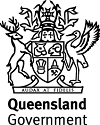Published Wednesday, 25 May, 2016 at 10:22 AM

Minister for Environment and Heritage Protection and Minister for National Parks and the Great Barrier Reef
The Honourable Steven Miles
Reef Water Science Taskforce report guides $90M investment
The Palaszczuk Government will use recommendations from Great Barrier Reef Water Science Taskforce, handed to it today, to allocate its $90 million over four years to deliver cleaner water for a healthy Reef.
The Taskforce, chaired by Chief Scientist Dr Geoff Garrett, has recommended a greater focus on innovation, education support for farmers and expanded monitoring of water quality.
Dr Garrett presented the Taskforce’s findings to Minister for the Great Barrier Reef Dr Steven Miles at Parliament House today.
Key projects to be funded include:
- up to $33.5 million for two integrated projects – one in the Wet Tropics to focus on reducing nutrient and pesticide loss, and one in the Burdekin to focus on reducing sediment and nutrient run-off;
- up to $20 million for more effective, targeted and coordinated extension services to support large scale land management practice change;
- up to $9 million for innovation, knowledge and science including a new Reef Innovation Fund to support the development, scaling up and roll-out of new technologies and approaches;
- up to $11 million to ramp up existing Reef-wide monitoring efforts to provide more comprehensive information to farmers.
Dr Miles said the Government will consider the Taskforce’s recommendations in full and consult closely with regional stakeholders.
“There are a number of actions recommended by the Taskforce that we can begin to implement immediately,” he said.
“These include exploring more affordable monitoring technologies to provider greater coverage of the catchments across more than 400,000 square kilometres of Queensland, and progressing the design of the two major integrated projects that will allow us to road-test measures recommended by the Taskforce.”
Dr Miles said that the Queensland Government would be looking to leverage the $90 million as much as possible with co-investment and public-private partnerships.
Dr Garrett said there was no one tool or silver bullet to save the Great Barrier Reef.
“A mix of tools are required including incentives, regulation and innovation,” Dr Garrett said.
“While we acknowledge the efforts to date, it is abundantly clear that more widespread and rapid action is required.
“Everyone including farmers, graziers, developers, the resources sector, community members, traditional owners and tourism operators must be part of the solution.
“Achieving the water quality targets in the timescale proposed is likely to be well beyond the funds currently allocated by the Queensland and Australian governments.
“The Taskforce found that even full application of best management practices across all farms in the reef catchments would not achieve the targets, therefore, a strong focus on innovation, new technologies and different ways of thinking is required.
“We need a fundamental shift in the way land is managed. The challenge will be to lead a significant management change program across such a vast scale,’ Dr Garrett said.
A consortium of economic and water quality experts would continue to assess the costs and effectiveness of various solutions to identify the total investment that may be required to meet the targets. This work is expected to be completed by July 2016.
The Final Report is available on the Great Barrier Reef Living Wonder website – www.gbr.qld.gov.au.
The Taskforce recommendations are:
- Review targets in 2016, feeding into the review of the Reef Water Quality Protection Plan.
- Substantially improve communication and information to build understanding of the pressures on the reef and to support management practice and social change.
- Invest in more effective, targeted and coordinated extension to support large scale land management practice change.
- Establish greater use of incentives and market approaches to support water quality improvements.
- Implement staged regulations to reduce water pollution throughout the reef regions.
- Better align science and fund development of new ideas and solutions.
- Fund additional long-term and finer-scale catchment monitoring, modelling and reporting for improved decision making and adaptive management.
- Implement two, well facilitated major integrated projects (MIPS) in pollutant ‘hot spot’ areas to evaluate the most effective combination of tools to inform the design of future programs.
- Investment planning: Develop a strategic investment plan and establish reef-friendly public-private partnerships.
- Simplify and strengthen governance and clarify roles and responsibilities within and between the Queensland and Australian Governments.
ENDS
MEDIA 0412 393 909

